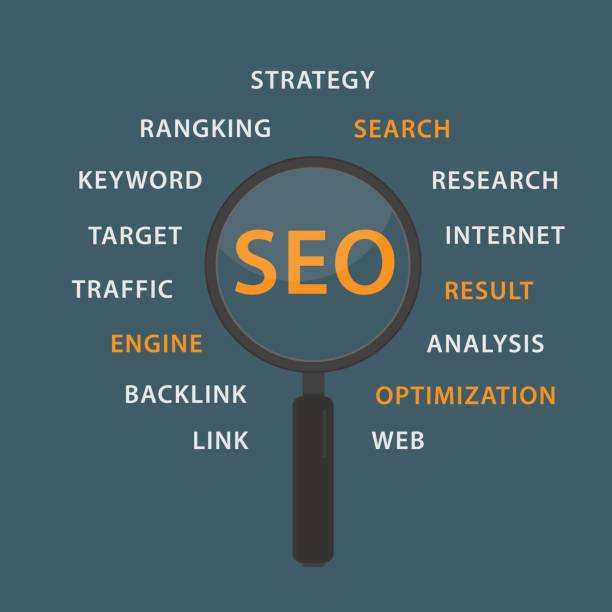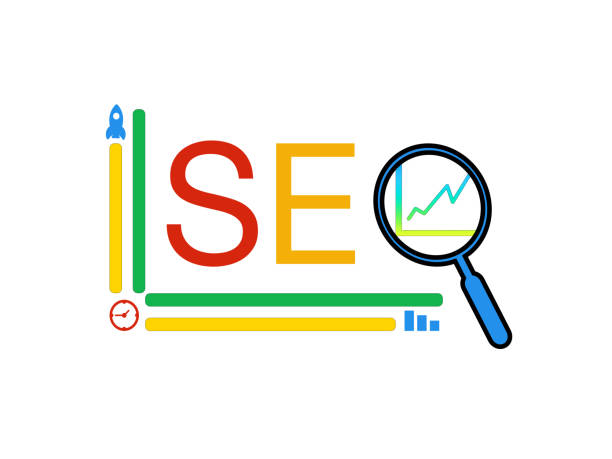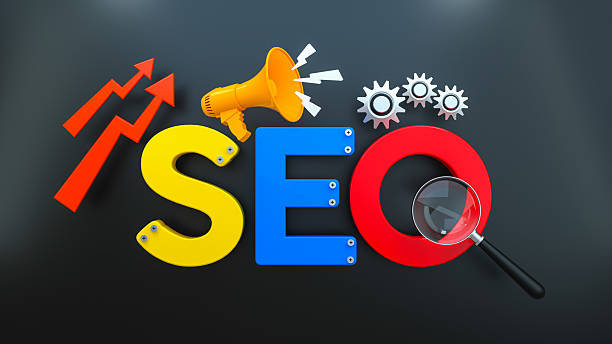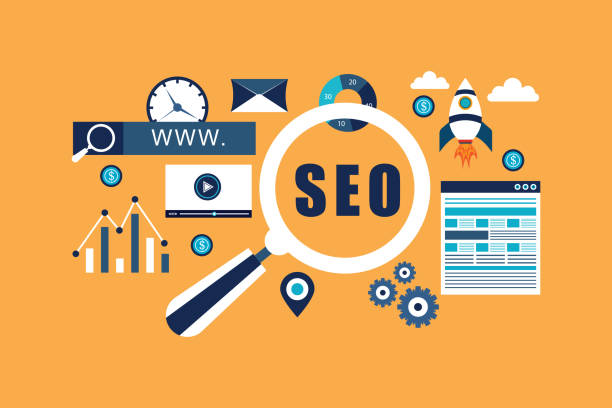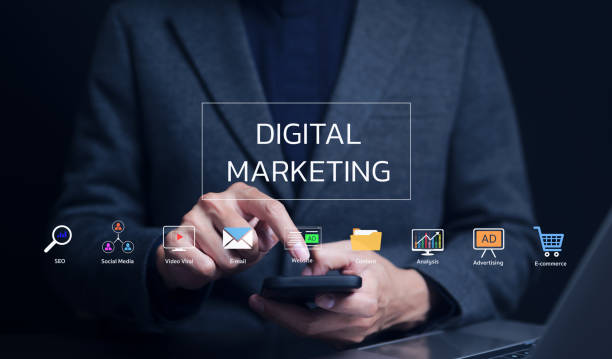What is On-Page SEO and Why is it Important?
On-Page SEO refers to a set of actions taken within a website to improve its ranking in Google search results.
These actions include optimizing content, using appropriate keywords, improving website structure, and increasing page loading speed.
SEO is important because it helps search engines better understand your website’s content and show it to relevant users.
By implementing on-page SEO, you can increase your website’s organic traffic and, as a result, improve your sales and revenue.
On-page SEO is one of the two main pillars of SEO, and off-page SEO alongside it helps improve the site’s ranking.
One of the most important aspects of on-page SEO is keyword optimization.
This means using keywords relevant to your business in titles, meta descriptions, and page content.
However, it’s important to avoid overusing keywords, as this can harm your site’s ranking instead of improving it.
Proper keyword research plays a crucial role in this area.
Content optimization is another important aspect of on-page SEO.
Your website content should be valuable, relevant, and engaging for users.
It should also be written in a way that search engines can easily understand.
To do this, you can use headings, subheadings, images, and videos.
Content marketing helps you create high-quality content that meets users’ needs.
Improving website structure is also an important factor in on-page SEO.
Your site should have a logical and user-friendly structure.
Users should be able to easily navigate your site and find the information they need.
To do this, you can use menus, internal links, and sitemaps.
With strong on-page SEO, your website can achieve a better ranking in search results and attract more visitors.
Does your current company website present a worthy image of your brand and attract new customers?
If not, turn this challenge into an opportunity with Rasaweb’s professional corporate website design services.
✅ Significantly improves your brand’s credibility and image.
✅ Paves the way for attracting leads and new customers.
⚡ Contact Rasaweb now for a free and expert consultation!
Keyword Research – A Fundamental Step in On-Page SEO
Keyword research is the process of identifying the words and phrases that users use to search in search engines.
This process helps you understand what users are looking for and how you can optimize your website content to meet their needs.
On-page SEO without accurate keyword research is like building a house without a plan.
To perform keyword research, you can use various tools such as Ahrefs, Moz Keyword Explorer, and Ubersuggest.
These tools help you find search volume, competition, and related keywords.
You can also use Google Keyword Planner, which is a free tool from Google.
When choosing keywords, you should keep a few things in mind.
First, the keywords should be relevant to your business.
Second, the keywords should have a decent search volume.
Third, the keywords should have low competition.
Successful on-page SEO requires the identification and strategic use of high-potential keywords.
After selecting keywords, you should use them in your website content.
Keywords should be used in titles, meta descriptions, page content, and images.
However, it’s important to avoid overusing keywords, as this can harm your site’s ranking instead of improving it.
On-page SEO requires a balance in the use of keywords so that search engines can properly evaluate your content.
Optimizing Titles and Meta Descriptions to Increase Click-Through Rate
Titles and meta descriptions are two important elements in on-page SEO that are displayed in Google search results.
The title is the title of your page, and the meta description is a summary of your page content.
These two elements play an important role in attracting users and increasing click-through rate (CTR).
Improve your on-page SEO by properly optimizing these elements.
To optimize titles, you should use relevant keywords.
The title should be attractive and concise and tell users what your page is about.
Also, the title should not be too long, as it may be truncated in search results.
The optimal title length is typically between 50 and 60 characters.
To optimize meta descriptions, you should provide an accurate and engaging summary of your page content.
The meta description should entice users to click on your link.
Also, the meta description should include relevant keywords.
Meta descriptions help search engines better understand the content of the page and display it to users.
On-page SEO requires attention to these details.
Here’s an example of how to optimize a title and meta description:
| Element | Poor Example | Optimized Example |
|---|---|---|
| Title | Home Page | Buy Women’s Clothing Online | Modiseh Store |
| Meta Description | Welcome to our website! | The largest online store for women’s clothing with the latest models and the best prices. Easy purchase and fast delivery. |
Click here to preview your posts with PRO themes ››
By optimizing titles and meta descriptions, you can increase your click-through rate and drive more traffic to your website.
Effective on-page SEO requires careful attention to these fundamental elements.
Optimizing Content for Search Engines and Users
Content optimization is one of the most important aspects of on-page SEO.
Your website content should be valuable, relevant, and engaging for users.
It should also be written in a way that search engines can easily understand.
Strengthen your site’s on-page SEO by creating high-quality, optimized content.
To optimize content, you can use headings, subheadings, images, and videos.
Headings and subheadings help search engines understand the structure of your content.
Images and videos can make your content more attractive and informative.
Optimizing images with alt tags and appropriate file names helps with on-page SEO.
You should also use relevant keywords in your content.
However, it’s important to avoid overusing keywords, as this can harm your site’s ranking instead of improving it.
On-page SEO requires a balance in the use of keywords and providing valuable content.
In addition, your content should be up-to-date and fresh.
Search engines give better rankings to sites that regularly publish new content.
On-page SEO continuously requires the production of new and up-to-date content.
Your content should answer users’ questions and needs.
Try to create content that provides solutions to users’ problems and provides them with useful information.
Successful on-page SEO is built on providing high-quality and relevant content to users.
Is your company website as professional and trustworthy as it should be? Or is it scaring away potential customers?
Rasaweb, with years of experience in designing professional corporate websites, is your comprehensive solution.
✅ Building a powerful and professional image of your brand
✅ Converting visitors into real customers
⚡ Get a free consultation now!
Improving Site Loading Speed – A Key Factor in User Experience and SEO
Site loading speed is an important factor in user experience and on-page SEO.
Users who have to wait a long time for a page to load are likely to leave your site.
Search engines also give better rankings to sites that have high loading speeds.
Improve your on-page SEO and enhance the user experience by improving site loading speed.
You can use various methods to improve site loading speed.
For example, you can optimize your images, use a content delivery network (CDN), and compress your site code.
GTmetrix is a useful tool for analyzing site speed and providing optimization suggestions.
Image optimization includes reducing the file size of images without sacrificing quality.
You can use online tools or image editing software for this.
On-page SEO helps improve site speed through image optimization.
Using a CDN helps you store your site’s content on different servers around the world.
This allows users accessing your site from different parts of the world to experience faster loading speeds.
On-page SEO provides faster user access by using a CDN.
Site code compression involves removing empty spaces, comments, and unnecessary code.
This reduces the size of your site’s files and increases its loading speed.
On-page SEO requires code optimization to improve site speed and efficiency.
Optimizing Internal Links to Improve Site Structure
Internal links are links that connect different pages of your website to each other.
These links play an important role in improving site structure, user experience, and on-page SEO.
Strengthen your site’s on-page SEO and help search engines understand the site structure by using appropriate internal links.
Internal links help search engines better understand your website’s pages and recognize the connections between them.
Internal links also help users easily navigate your site and find the information they need.
Internal linking strategy plays an important role in improving site structure.
When creating internal links, you should keep a few things in mind.
First, the links should be relevant to the page content.
Second, the links should point to important and valuable pages on your site.
Third, the links should be created using appropriate anchor text.
On-page SEO requires relevant and strategic internal linking.
Anchor text is the text that the link points to.
The anchor text should be relevant to the content of the page you are linking to.
For example, if you are linking to a page about on-page SEO, the anchor text could be “On-Page SEO.”
On-page SEO makes the connection between pages clearer to search engines by using appropriate anchor text.
Internal links can help improve your site’s ranking in search results.
Search engines give better rankings to sites that have a strong internal link structure.
Strong on-page SEO requires an effective internal linking strategy.
Optimizing Images for SEO and User Experience
Image optimization is an important aspect of on-page SEO that is often overlooked.
Images can make your website content more attractive and informative, but if they are not properly optimized, they can slow down your website’s loading speed and harm your site’s ranking.
Strengthen your site’s on-page SEO and improve the user experience by optimizing images.
Click here to preview your posts with PRO themes ››
To optimize images, you should keep a few things in mind.
First, reduce the file size of the images.
Second, use the appropriate file format.
Third, use alt text.
On-page SEO helps improve site speed through image optimization.
Reducing the file size of images includes reducing the size of images without sacrificing quality.
You can use online tools or image editing software for this.
Using the appropriate file format, such as JPEG for images with many colors and PNG for images with few colors, can help reduce file size.
On-page SEO improves site loading speed by reducing image size.
Alt text is the text that is displayed in place of the image if the image is not displayed.
The alt text should provide an accurate and concise description of the image content.
Also, the alt text should include relevant keywords.
On-page SEO helps search engines understand the content of images by using appropriate alt text.
| Feature | Description | Example |
|---|---|---|
| File Size | The image file size should be as small as possible. | Less than 100 KB |
| File Format | Use JPEG format for images with many colors and PNG format for images with few colors | JPEG, PNG |
| Alt Text | Accurate and concise description of the image content and includes relevant keywords | “On-page SEO sample of a web page” |
By optimizing images, you can increase your website’s loading speed, improve your site’s ranking in search results, and enhance the user experience.
On-page SEO requires attention to all details, including image optimization.
Optimizing URL Structure for SEO
Optimizing URL structure is an important aspect of on-page SEO that can help improve your site’s ranking in search results.
URLs should be short, descriptive, and include relevant keywords.
Improve your site’s on-page SEO and help search engines understand the content of the pages by optimizing the URL structure.
URLs should be short because longer URLs are difficult to remember and are not fully displayed in search results.
URLs should be descriptive because descriptive URLs help users and search engines understand what the page is about.
URLs should include relevant keywords because using keywords in the URL can help improve your site’s ranking in search results.
Proper URL structure helps with SEO.
For example, the following URL is a good URL:
https://www.example.com/on-page-seo/comprehensive-guide
This URL is short, descriptive, and includes relevant keywords.
In contrast, the following URL is a bad URL:
https://www.example.com/page123
This URL is long, non-descriptive, and lacks relevant keywords.
On-page SEO requires optimized and user-friendly URLs.
Also, you should avoid using special characters and spaces in URLs.
These characters can make URLs complex and unreadable.
On-page SEO improves the user experience by using simple and readable URLs.
Does your current website display your brand’s credibility as it should? Or does it scare away potential customers?
Rasaweb, with years of experience in designing professional corporate websites, is your comprehensive solution.
✅ A modern, beautiful site tailored to your brand identity
✅ Significant increase in lead generation and new customers
⚡ Contact Rasaweb now for a free corporate website design consultation!
The Importance of a Responsive Website for On-Page SEO
A responsive website means that your website automatically adapts to the screen size of different devices, such as mobile phones, tablets, and desktop computers.
A responsive website is an important factor in user experience and on-page SEO.
Improve your site’s on-page SEO and enhance the user experience by designing a responsive website.
Users who use mobile phones to access the Internet expect websites to be displayed correctly on their devices.
If your site is not responsive, users may have to zoom in or out to see the content of the site.
This can make the user experience unpleasant and cause users to leave your site.
The importance of mobile-first indexing is increasing day by day in SEO.
Search engines also give better rankings to sites that are responsive.
Google has officially announced that a responsive website is a ranking factor.
On-page SEO requires responsive design to satisfy users and search engines.
To make your site responsive, you can use various methods.
For example, you can use a responsive template, use media queries, and use a responsive CSS framework.
On-page SEO improves site traffic and ranking with responsive design.
By making your site responsive, you can improve the user experience, improve your site’s ranking in search results, and attract more traffic to your site.
On-page SEO requires attention to all aspects of the user experience, including the responsiveness of the site.
Click here to preview your posts with PRO themes ››
The Role of Schema Markup in Improving On-Page SEO
Schema Markup is code that you can add to your website to help search engines better understand your website’s content.
Schema Markup can provide information to search engines such as the type of content, author, publication date, and more.
Improve your site’s on-page SEO and help search engines better understand the content of the pages by using Schema Markup.
Schema Markup can help improve the display of your site in search results.
For example, if you mark up an article using Schema Markup, Google may display information such as the title, author, publication date, and article rating in the search results.
This can increase your site’s click-through rate (CTR).
More information about Schema Markup is available on the Google Developers website.
Schema Markup can help search engines better understand your website’s content.
This can help improve your site’s ranking in search results.
On-page SEO helps search engines better understand the content of pages by using Schema Markup.
To use Schema Markup, you need to add the code to your website pages.
You can use various online tools to create Schema Markup code.
On-page SEO improves with the use of appropriate tools and sufficient knowledge about Schema Markup.
By using Schema Markup, you can help search engines better understand your website’s content, improve the display of your site in search results, and improve your site’s ranking in search results.
On-page SEO requires the use of all available tools and techniques, including Schema Markup.
Frequently Asked Questions
| Question | Answer |
|---|---|
| What is On-Page SEO? | On-page SEO involves optimizing elements that are directly within your control and within your website. Its goal is to help search engines better understand the content of the page and improve its ranking. |
| Why is on-page SEO important? | On-page SEO provides clear signals to search engines about the content of the page, improves the user experience, and increases the chances of attracting organic traffic. |
| What are the most important on-page SEO factors? | Keywords, Title Tag, Meta Description, URL structure, quality content, image optimization, and internal links are among the most important factors. |
| What is the role of the Title Tag in on-page SEO? | The title tag is one of the most important signals for search engines and users, which specifies the main topic of the page. It should include the main keyword and be attractive. |
| How important is the Meta Description? | Meta descriptions do not directly affect ranking, but they can improve click-through rate (CTR) by encouraging users to click. |
| How do we optimize images for on-page SEO? | By using a descriptive file name, appropriate Alt Text containing keywords, compression to reduce size, and correct dimensions. |
| What effect do Internal Links have on SEO? | Internal links help search engines discover and index site pages, distribute PageRank throughout the site, and improve user navigation. |
| Is page loading speed one of the on-page SEO factors? | Yes, page loading speed is a critical factor in on-page SEO and user experience. Slower pages can lead to higher bounce rates and lower rankings. |
| What are the characteristics of quality content for on-page SEO? | Quality content should be comprehensive, unique, relevant, reliable, readable, and fully answer user needs and questions. |
| How can keywords be used in content? | Keywords should be used naturally in the title, subheadings, first paragraph, body text, and image alt text. Avoid Keyword Stuffing. |
And other services of Rasa Web advertising agency in the field of advertising
Intelligent Marketplace: An effective tool for analyzing customer behavior by customizing the user experience.
Intelligent Brand Identity: Designed for businesses looking to increase sales through attractive user interface design.
Intelligent UI/UX: A new service to increase customer attraction through SEO-driven content strategy.
Intelligent Brand Identity: Professional optimization to analyze customer behavior using an SEO-driven content strategy.
Intelligent Digital Advertising: A new service to increase customer attraction through the use of real data.
And more than hundreds of other services in the field of internet advertising, advertising consulting and organizational solutions
Internet Advertising | Advertising Strategy | Advertorial
Resources
What is Internal SEO?
,Internal Website SEO Training
,What is Internal SEO and why is it important? Internal SEO Training
,What is Internal Website SEO (On-Page SEO)?
? In order for your business to shine in the online world and reach its peak, Rasaweb Afarin Digital Marketing Agency is always by your side by providing comprehensive services including WordPress website design, SEO, and social media management.
📍 Tehran, Mirdamad Street, next to the Central Bank, South Kazeroun Alley, Ramin Alley No. 6
“`


